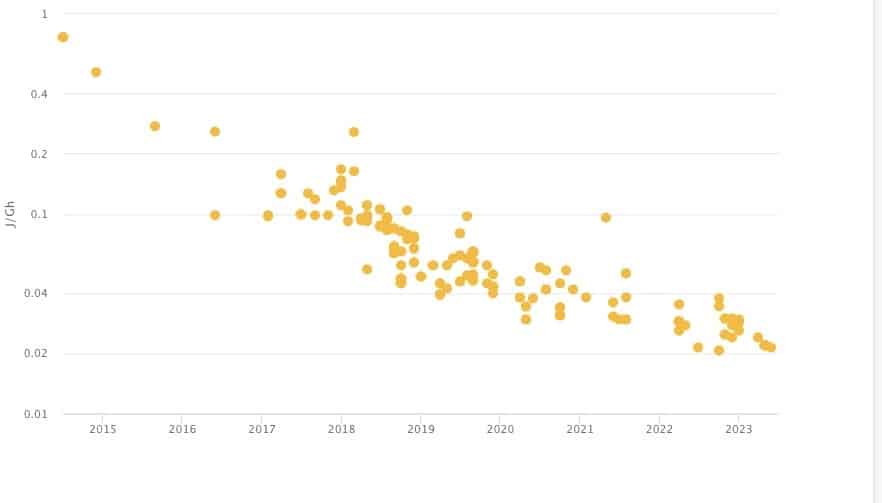Recent changes to the Cambridge Bitcoin Electricity Consumption Index (CBECI) methodology have led JP Morgan to adjust its estimates concerning the production costs of Bitcoin(BTC).
Previously pegged at approximately $21,000, the new model suggests that the cost of producing a single Bitcoin is now closer to $18,000. The shift signifies that variations in electricity prices will exert a less dramatic influence on the overall expense of Bitcoin mining.
According to trackers, Bitcoin is currently trading at around $25,800.
Before the CBECI adjustments, JPMorgan’s calculations revealed that a one cent per kilowatt-hour (kWh) fluctuation in electricity prices would induce a $4,300 alteration in Bitcoin production costs.
With the revised methodology, the cost sensitivity is slightly reduced to around $3,800 per Bitcoin.
This nuanced change holds significant implications for future energy-related stress tests in the Bitcoin mining scene, particularly with the upcoming Bitcoin halving event in 2024.
After halving, block rewards will drop by 50%, making electricity costs a more substantial portion of the miners’ total expenses.
The increased sensitivity to energy costs post-halving will require miners to be even more vigilant in managing operational costs.
The Cambridge Centre for Alternative Finance, responsible for the CBECI, made these revisions to enhance the index’s reliability and precision.
The updated methodology acknowledges the complexity and variability of mining hardware contributing to Bitcoin’s overall hash rate.
It posits that not all mining equipment should be viewed through the same lens, given the regular hardware upgrades and the use of a mixed set of machines with varying efficiencies.
The need for this overhaul arose from the desire to confirm whether the Bitcoin network’s increased hash rate is due to the use of more modern, energy-efficient hardware. This idea was first based on US import data and was investigated further through analysis.
Credit: Source link
































